Professional athletes deceive us. They deceive us every time they make the extraordinarily precise and difficult look simple and easy. Swinging at and even making contact with a major league fastball is an absurdity, after all. So few can do it at all, but when we watch someone like Jason Heyward or Andrew McCutchen do it when his prowess in that regard is so well established, we lose track of the precision and the difficulty, because it looks so simple. And so easy.
But Heyward’s performance at the plate this year has tested the patience and rational thinking of fans and beat writers alike, at least until very recently. Given the well understood cruelty of April in Heyward’s background, it was expected that by Memorial Day he’d be lighting up the box score, but that didn’t happen. Cubs fans, though, are well versed in waiting for things to come to fruition, so even by mid June, worry wasn’t fully setting in. Winning at a near .700 clip helps with that.
Even when the winning slowed through a testing stretch the lead up to the All-Star break before the team collectively righted the ship following the break, Heyward was still not as advertised, and by then, fans and writers had passed into an almost state of resigned acceptance. He wasn’t hitting, and maybe just wouldn’t, but the team was winning. C’est la vie.
Similarly, in Pittsburgh, Andrew McCutchen was struggling through a career-worst season. After years of steadily leading the Pirates offense, he’d inexplicably fallen off of a cliff on offense. In June his swing was questioned, and by July, his struggles were chalked up to the simple cruelty of baseball. Whatever the case, at the start of August, his OPS sat at .719—far, far lower than he’d ever posted in a season—and the Pirates made the decision to give him a series off at the very beginning of the month.
That three day sabbatical appears to have done the trick. Since taking the first series in August off, he’s hit steadily throughout the month, and his OPS has risen to around .750 in that time. Like McCutchen, Heyward has experienced a similar mini-renaissance since taking a few days off. His came just a few weeks after McCutchen’s, and it was then when I began to wonder if the similarities were more than just two struggling veterans taking a series off.
Shortly after Heyward took his series off, I reached out to Rob Biertempfel and Travis Sawchik, both of the Pittsburgh Tribune-Review, to gain some better understanding of what had gone on in McCutchen’s case. Both were plain about the fact that Clint Hurdle made the decision, and while McCutchen was amenable to it, he has not credited it with his success since returning. In fact, Sawchik shared that McCutchen remains hostile to the idea that it’s helped him, a sentiment he expressed just a couple of weeks ago: “I will forever tell you that (those) three days had nothing to do with what I’m doing.”
Think what he might, it’s hard to explain the fact that he’s having the best month of his season without wondering at what that series off did for him. Both Sawchik and Biertempfel indicated that there’s been some change in his plate approach since returning, and Biertempfel described it to me this way, “Maybe a bit more patient. He’s drawing more walks and cut down on strikeouts. Driving more balls to the gap. More line drives, hard-hit balls and grounders, fewer pop-ups.”
Sawchik agrees that his plate discipline has improved, but he added that it might be partly due to a slight mechanical change in his swing as well. Earlier in the season, it was thought to be something as simple as gripping the bat too tightly, and Sawchik says it’s possible that he’s made other small tweaks since then: “He might be starting his swing a tad earlier. His hand placement might be slightly different.” But what Sawchik believes might be the real difference is something even simpler. It’s just rest.
The Pirates believe in its value firmly, and Sawchik agreed, saying, “After the benching in Atlanta earlier in the month, anecdotally, he appeared to have fresher legs. He was more active on the base paths and made two outstanding catches on the West Coast road trip.” Sawchik also added that he thought McCutchen had been doing too much work prior to taking that series off, perhaps in an attempt to overcome what he was experiencing. Sawchik also shared that it’s possible that McCutchen has an undisclosed injury or has just lost a step: “While his legs appeared fresher, his SpeedScore, stolen base attempts and stolen bases, infield hit percentage, extra-bases taken percentage, and batting average on ground balls are all at career lows.”
As for Jason Heyward, his struggles have been equally documented, pondered, and stressed over, and his solution might be just as simple, though different. Where McCutchen’s may just have been a problem of needed rest, Heyward’s may have been a problem of an overly complicated approach at the plate. Back in February, Ryan Davis noted a perceptible change in Jason Heyward’s swing – a slight toe tap just before he started his swing. A change that at the time was believed would help unleash Heyward’s power.
But, as that power not only didn’t show itself and instead we were treated with a steady dose of weak contact and groundouts, the change to his swing started to appear as if it might be the problem.
To better understand the difference in Heyward just from 2015 to 2016, I turned to Ryan Parker, who shared with me via email that Heyward’s timing has changed notably and it’s killing his ability to make hard contact. Parker first pointed out a change in Heyward’s timing from last year to this one, “In 2016 he is starting to move about .15 seconds sooner. I checked several other swings and the difference from when he started in 2015 vs 2016 is consistently .20 seconds to .12 seconds. This seems minor, but any time a hitter changes their timing it can bring up other swing changes.”
To see this in action, first take a look at Heyward hitting a home run in 2015 (left) vs. 2016 (right):
Then, take a look at the difference in lower body movement from last year to this year:
Interestingly, an earlier start is what Jose Bautista credits for his increase in power, but for Heyward, that’s obviously not been the case. Starting earlier is not a guarantee of increased power, of course, and it’s not as if he is suddenly going to start hitting 30-40 home runs a year, but the hope was that he’d experience his own uptick. The problem, Parker thinks, might have more to do with the angle of Heyward’s bat as he moves his body, “In 2015 when he went to launch his swing his bat was consistently around a 40 degree angle. This year that angle is much different at 22-26 degrees.”
Here’s a look at that difference – first, in 2015:
And then this year:
Parker described to me the difference this makes, saying, “My hunch is that because Heyward naturally moves (loads, cocks, sets angle, whatever you want to call it) his barrel when he moves his foot, his new stride requires him to move his bat for .15 seconds longer leading to this more exaggerated position before launch. His new point of launch is a tough place to be. His barrel now has a long way to travel and big league fastballs love it when the barrel can’t get where it needs to be quickly.”
And that’s a serious problem, especially when it is evident that major league pitchers have picked up on this problem and thrown him more fastballs (at about a 65 percent rate) than anyone else in baseball. They know he’s struggling to get to them, and they’ve feasted on that.
As a result, his slugging percentage on hard pitches has dropped. Take a look at 2015:
And then compare that to this year:
The problem has been evident for a while, and its possible cause might have been identified. After Heyward returned from four games off just a couple of weeks ago, he had noticeably ditched the toe-tap in his pre-swing, something Evan Altman noted shortly afterward. Sahadev Sharma noted the change as well, highlighting the return to simplicity in Heyward’s approach at the plate.
This is a very small change, and it’s too early to credit it for the improved performance at the plate that Heyward has shown since his days off, but that improvement is significant. Since returning to the lineup on August 22, he’s had five multi-hit games and he’s driven in ten runs—a stretch in which he’s hit over .300. He’s also making harder contact, especially on fastballs and breaking pitches, so even if the much-hoped-for and highly lauded potential power never surfaces, he’s showing signs of returning to the kind of hitter he’s been for most of his career, which is a very good thing and a potential boon to the offense when playoff games come next month.
Heyward is not necessarily cured of what’s ailed him, however, but there’s plenty of reason to remain optimistic. Not just for his track record, but for the man responsible for guiding his growth as a hitter: John Mallee.
“He’s with one of the best hitting minds on the planet in the person of John Mallee and will have an entire off-season to fine tune his swing should Heyward choose to do so. Jose Altuve went from good to All Star under Mallee’s tutelage. Heyward’s own teammate Kris Bryant went from very good to MVP contender after making some small changes with Mallee. Addison Russell is another example of good to better after some tweaks suggested by Mallee,” Parker said in his email, noting his own optimism about Heyward’s future. “No coach is a guarantee for success, but Heyward has elite physical tools, has a great coach to learn from, and possibly the most important factor is Heyward has teammates who have gone through this process. He can draw info from a number of sources to help improve his swing.”
Ditching the toe tap is probably enough to salvage some of his offense for the remainder of this season, and it’s allowed for heroics like the three RBI performance on Sunday, but Heyward will have more work to do during the offseason to get back to his 6 WARP potential.
Both Heyward and McCutchen, veterans who have largely struggled through career-worst seasons, appear to have benefited from their time out of the lineup. In McCutchen’s case it appears as though it was just needed rest, and maybe Sawchik’s speculations about an undisclosed injury are accurate, but for Heyward, his time off appears at first to have been about ditching the timing mechanism in order to get his bat through the zone more quickly.
Either way, what they do at the plate is often so precise that something very small can negatively alter the whole mechanism. Sometimes it just takes rest to set things right, and sometimes it’s more detailed than that. In both Pittsburgh and Chicago, the hope is that these fixes are enough. At least for now.
Lead photo courtesy Matt Marton—USA Today Sports.
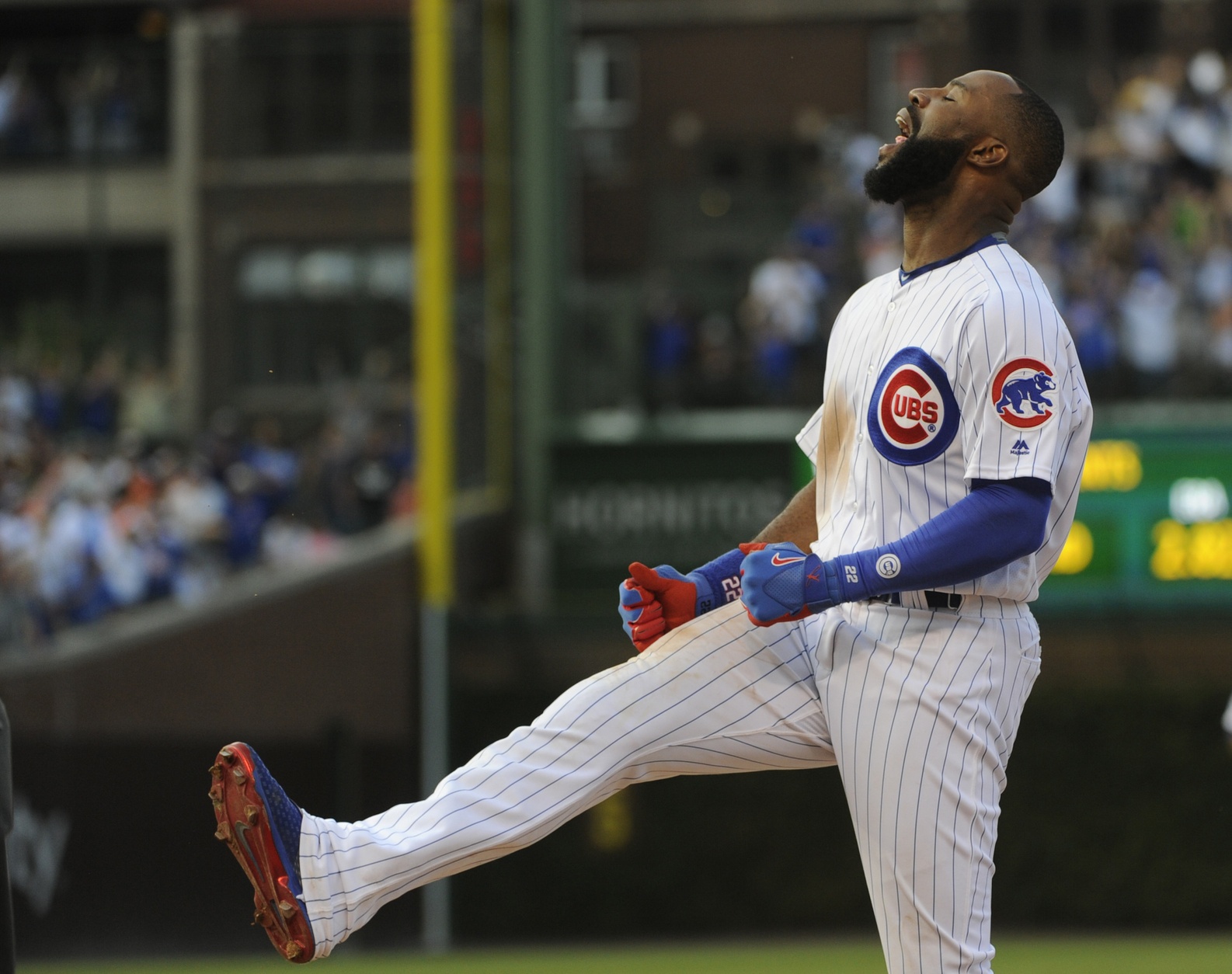


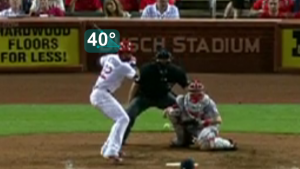
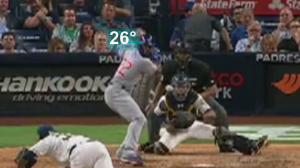
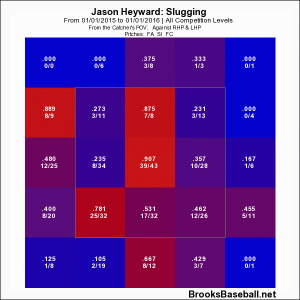
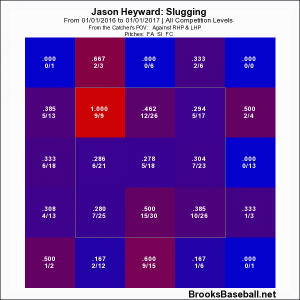
Don’t understand the tinkering when it does such damage as Heyward went through. Glad he’s back, we’ll need him in the playoffs!